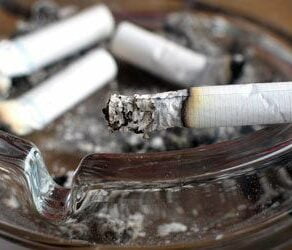
Table of Contents:
Question: How to restore dingy shirts/socks back to white?
White laundry can quickly become stained, discolored and dingy looking. To keep your whites as bright as possible, follow these simple steps.
You Will Need:
- Bleach
- Baking soda
- Dish detergent (ex: Cascade)
- Water softener (ex: Calgon)
- Borax
- Lemon juice
- Automatic dishwasher detergent
- Bucket
- Hot Water
Steps to Brighten Whites:
- We all know that using bleach will help to whiten whites. Adding ½ cup of baking soda, a natural whitener, to the washing machine, allows you to decrease the amount of bleach while still whitening your clothes. The decreased bleach also allows for a gentler cleaning.
- For extreme brightening, add ½ cup of dish detergent to a hot water cycle along with ¼ cup of water softener and ¼ cup borax. Wash using a normal cycle.
- Tough dirt seems to land on socks and can be difficult to remove. Combine ½ cup lemon juice and 2 tablespoons of automatic dishwasher detergent in a bucket filled with one gallon of hot water.
- Soak the items in the water for at least 30 minutes. Dirtier items may require soaking overnight.
- Wash as normal.
Additional Tips and Ideas
- It’s important to wash whites regularly and keep tabs on any developing stains from perspiration, etc. Treat any stains immediately to avoid setting them or allowing them to worsen.
- It may not be necessary to perform this level of cleaning with each load, but regular touch-ups will keep your clothes looking their best.









My whites come out of the washer with light brown spots on them. They won’t come out even in the next wash. I have ruined several white T-shirts and tank tops. What is causing this? I clean my washer on a regular basis with tide machine cleaner. Any tips?
I have the same problem!
These are rust or iron spots. Use rust remover or iron out on them.
It’s chlorine residue from the bleaching… Why would iron end up there? You’re either using too much bleach or not rinsing it with enough water.
RE: Dude’s comment above, “Why would iron end up there?”
In treated city water systems, iron likely would NOT end up there. However, in a rural area like the one where we live, it is common to have a well drilled (our well is over 200 feet deep) and an electric pump delivers the water to your house. You have the water periodically tested by the health department to assure safety. And once a year or so we take a sample to Sears (where we bought our water softener) to have the hardness tested. Ours is “off the charts” hard, and before we bought the water softener, it left heavy lime deposits on shower doors, water heaters, and on everything that used water. This water also has a high iron content that can produce rusty looking stains. And incidentally, there’s a high frequency of kidney stones in this geographic area.
1/4 C water softener? What is water softener?
Cecelia,
When water has a high mineral content, it is referred to as “hard water.” Hard water often leaves a hazy residue (which is the minerals) on cups or dishes, and causes fabrics to become dingy in the wash. There are chemicals and machines that can remove or neutralize the excess minerals, and those are referred to as “water softeners.” The article is referring to a chemical water softener, such as Calgon.
Source: Wikipedia – Water Softening
Source: Wikipedia – Hard Water
Source: Wikipedia – Calgon
You have covered all the ingredients. You may also boil the whites if you have that capability.